For the 2025 school year, there is 1 public middle school serving 483 students in Valley View Independent School District. This district's average middle testing ranking is 5/10, which is in the bottom 50% of public middle schools in Texas.
Public Middle School in Valley View Independent School District have an average math proficiency score of 37% (versus the Texas public middle school average of 40%), and reading proficiency score of 47% (versus the 52% statewide average).
Minority enrollment is 100% of the student body (majority Hispanic), which is more than the Texas public middle school average of 75% (majority Hispanic).
Overview
This School District
This State (TX)
# Schools
6 Schools
2,747 Schools
# Students
3,515 Students
1,489,538 Students
# Teachers
232 Teachers
103,135 Teachers
Student : Teacher Ratio
15:1
15:1
District Rank
Valley View Independent School District, which is ranked #539 of all 1,196 school districts in Texas (based off of combined math and reading proficiency testing data) for the 2021-2022 school year.
The school district's graduation rate of 95% has stayed relatively flat over five school years.
Overall District Rank
#504 out of 1204 school districts
(Top 50%)
(Top 50%)
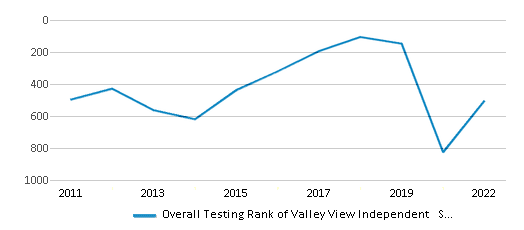
Math Test Scores (% Proficient)
43%
41%
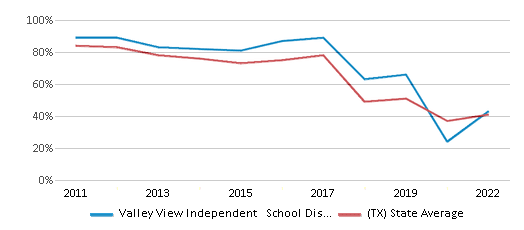
Reading/Language Arts Test Scores (% Proficient)
51%
51%

Science Test Scores (% Proficient)
46%
46%
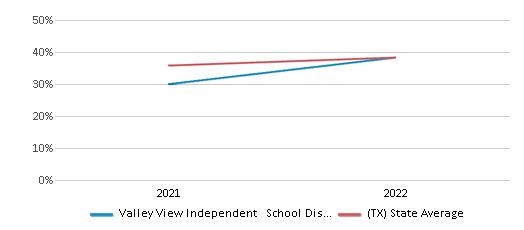
Graduation Rate
95%
90%

Students by Ethnicity:
Diversity Score
0.00
0.64
# American Indian Students
n/a
5,199 Students
% American Indian Students
n/a
n/a
# Asian Students
2 Students
77,599 Students
% Asian Students
n/a
5%
# Hispanic Students
3,508 Students
795,444 Students
% Hispanic Students
100%
53%
# Black Students
n/a
186,072 Students
% Black Students
n/a
13%
# White Students
5 Students
378,957 Students
% White Students
n/a
26%
# Hawaiian Students
n/a
2,404 Students
% Hawaiian Students
n/a
n/a
# Two or more races Students
n/a
43,863 Students
% of Two or more races Students
n/a
3%
Students by Grade:
# Students in PK Grade:
215
15,212
# Students in K Grade:
174
21,462
# Students in 1st Grade:
198
22,752
# Students in 2nd Grade:
214
22,958
# Students in 3rd Grade:
202
22,862
# Students in 4th Grade:
210
22,563
# Students in 5th Grade:
241
30,190
# Students in 6th Grade:
258
326,610
# Students in 7th Grade:
244
406,424
# Students in 8th Grade:
239
414,179
# Students in 9th Grade:
348
56,165
# Students in 10th Grade:
341
48,628
# Students in 11th Grade:
327
42,213
# Students in 12th Grade:
304
37,320
# Ungraded Students:
-
-
District Revenue and Spending
The revenue/student of $16,568 is higher than the state median of $13,387. The school district revenue/student has grown by 17% over four school years.
The school district's spending/student of $14,837 is higher than the state median of $14,116. The school district spending/student has grown by 17% over four school years.
Total Revenue
$58 MM
$74,029 MM
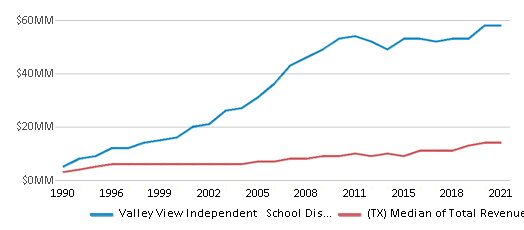
Spending
$52 MM
$78,063 MM
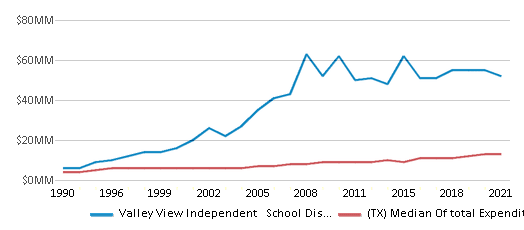
Revenue / Student
$16,568
$13,387
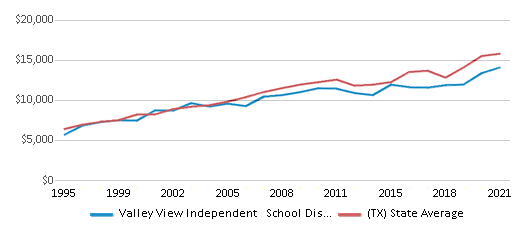
Spending / Student
$14,837
$14,116
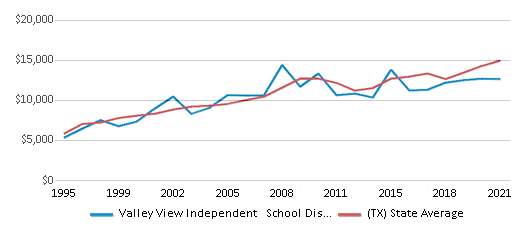
Best Valley View Independent School District Public Middle Schools (2025)
School
(Math and Reading Proficiency)
(Math and Reading Proficiency)
Location
Grades
Students
Rank: #11.
Valley View J High School
(Math: 37% | Reading: 47%)
Rank:
Rank:
5/
Bottom 50%10
9601 S Jackson Rd
Pharr, TX 78577
(956) 340-1300
Pharr, TX 78577
(956) 340-1300
Grades: 7-8
| 483 students
Recent Articles

Year-Round Or Traditional Schedule?
Which is more appropriate for your child? A year-round attendance schedule or traditional schedule? We look at the pros and cons.

Why You Should Encourage Your Child to Join a Sports Team
Participating in team sports has a great many benefits for children, there is no doubt. In this article you will learn what those benefits are.

White Students are Now the Minority in U.S. Public Schools
Increasing birth rates among immigrant families from Asia and Central and South America, combined with lower birth rates among white families, means that for the first time in history, public school students in the United States are majority-minority. This shift in demographics poses difficulties for schools as they work to accommodate children of varying language abilities and socio-economic backgrounds.





